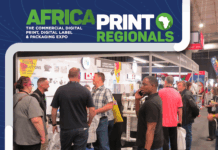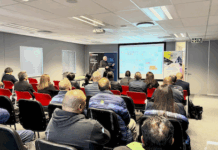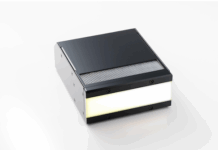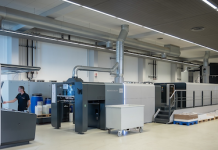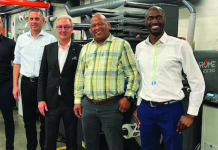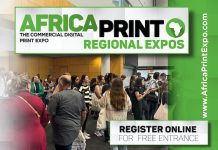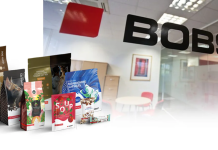Kodak CEO Jeff Clarke made a bold admission during the company’s drupa press conference. He said that, ‘the print industry is a dirty industry … one of the things we can do is to clean up the dirty chemicals.’ A key technology for achieving this goal is water wash digital flexo photopolymer plates, processed using water.
Flexo plates are widely used in packaging print production. Packaging is just about the only form of print that cannot be replaced with some sort of electronic equivalent, so packaging applications are remarkably attractive for a growing range of equipment manufacturers. Many of these companies such as HP and Xeikon are digital pioneers hoping to sell digital presses to printers getting into short-run packaging. But currently digital printing makes up only a small fraction of the global packaging business. Most packaging is still produced using conventional printing methods, such as flexography and gravure. Both of these processes have scope to improve their environmental footprints, with flexo leading the way.
The flexo printing method can print on virtually any substrate. This includes metals, plastic, thin films and paper, so it has a very broad application. The problem from an environmental perspective is that it uses a lot of rather nasty chemicals. This is why Jeff Clarke’s unexpectedly outspoken comment is absolutely spot on.
Kodak is in the vanguard of developments to improve the environmental friendliness of flexo printing with its Flexcel NX plates. These water wash plates do not depend on solvents to create a plate image. This is a good thing and what is even better is that Kodak is not alone. Fujifilm presented its Flenex water wash flexo plates, as did Asahi.
There have traditionally been quality limitations with this type of technology. Digital photopolymer flexo plates tend to lose their highlight dots when processed with aggressive solvents. They can break up at 5% tones, which means that tonal transitions are bumpy instead of smooth, so a technology which can ensure stable, small dots produces better quality. Another difficulty has been the durability and abrasion resistance of these plates, along with efficient ink transfer and problems associated with ink build up. The water wash plates shown at drupa all offered answers to these problems. But the most impressive was the Kodak technology, which has been under development for many years.
Instead of a Laser Ablative Mask system (LAMS), the Kodak plates are based on thin film layers, engineered to protect the polymers from oxygen. The thin layers make it easier to ensure precise dot shapes that are robust, as well as being able to print very small dots. Kodak’s competitors are working on new digital flexo plates able to achieve as-good results. Kodak is working on Ultra NX the next generation of Flexcel NX system, so we can expect continuous improvements to flexo’s environmental footprint. This is excellent news because let’s face it, brands without a stated Corporate Social Responsibility policy only want sustainability if it comes with the same performance and at the same cost as conventional equivalents.
The Verdigris project is an industry initiative intended to raise awareness of print’s positive environmental impact. It provides a weekly commentary to help printing companies keep up to date with environmental standards, and how environmentally friendly business management can help improve their bottom lines. Verdigris is supported by the following companies: Agfa Graphics, EFI, Epson, Fespa, HP, Kodak, Mondi, Pragati Offset, Practical Publishing, Ricoh, Shimizu Printing, Spindrift, Splash PR, Unity Publishing and Xeikon.




